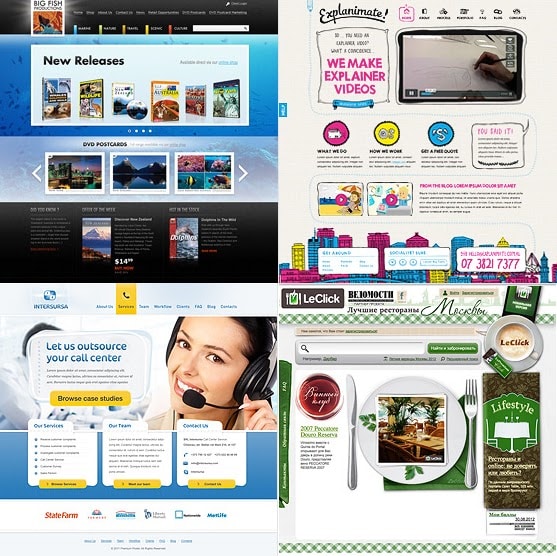So the time has finally come when you’ve decided it’s time to get a website up – whether it be for your personal blog or your business you’ve made the decision to get yourself onto the world wide web. So now you’re probably sitting there wondering – What now? Do I call GoDaddy? Web.com? Wix? I want a website – what do I do?
There’s a lot for you to figure out and unfortunately I won’t be able to cover everything within this one post – so with that I would like to introduce the I Want A Website post series. This series is intended to cover the various steps you’ll be going through to get that dream website of yours up and running. Starting with getting your domain name registered to choosing a hosting provider and deciding how you will be building your website. I will try to cover as many different options as possible while going through this, giving you the various pros and cons of each method.
With that – let’s start by figuring out what it is that we want exactly. I don’t so much mean the look and design of the website we want; rather first we need to determine what kind of website we want. You could have, for example,:
- an informational website geared towards developing a community of followers and providing information to them.
- an eCommerce website targeted towards providing various products for sale.
- a service based website that collects leads through call-to-action forms.
- an adult website that generates income through advertising.
There are many, many different types of websites out there – and the type of website you’re building will determine what set of tools and services you will need.
For the sake of this series I will focus primarily on service and product based websites as these will overlap with most other sites in many areas. The rest will be mentioned upon in less detail. The average business will want to start with a simple website to provide some information about them, offer information about their products & services, provide contact methods, and possibly maintain a blog about their businesses latest happenings.
So with that knowledge at hand let’s kick off our journey into building a website by taking a look at the different routes available for us. Because our website does not contain any truly custom functionality, and we aren’t building a complex and custom eCommerce site, nor anything server intensive, we can either utilize one of the many website builder platforms out there, or we can build our site ourselves. I’ll go into the pros and cons of each method below.
Option 1: Using A Website Builder
Going with a website builder means you’ll usually bundle together your domain name, hosting, and website builder all into one. This makes accounting extremely simple. Furthermore you need barely have any programming knowledge to put together a decently presentable website. Furthermore designing your website is all handled via a drag and drop interface aimed at someone who has never built a website before.
Most website builders will have various widgets and plugins you can utilize to embed social media feeds and other dynamic bits. However you are limited to what your website builder will allow. Want to embed that cool custom JavaScript Events Calendar you found online? Better hope your website builder supports it or has an equivalent widget of it’s own. Furthermore your website will always have the same look and feel as anyone else who utilized the same template you did.
For those of you looking to utilize WordPress, Red Dot, or any other CMS – Website Builders aren’t for you either. These are all built to be their own CMS solutions.
So with that said what do you do if you decide that using a Website Builder is for you? You head on over to our Using A Website Builder post.
Option 2: Building Things From Scratch
Going the custom route does make things a little bit more complicated for you initially – however you do end up with a lot more control over everything.
For starters it’s up to you to get your hosting and your domain name setup. Luckily the majority of the time you will get a free domain name with the purchase of a new annual hosting plan. This takes care of your initial two worries immediately and puts the responsibility onto your hosting company to set things up correctly.
Now keep in mind this doesn’t mean you do have to build everything from scratch. You can make full use of existing themes and templates to help you put together your website. If you wish to utilize a CMS such as WordPress you can make use of a huge resource of available free and premium themes to get you started. The same applies to starting with a simple HTML template.
So if you do decide to go with the custom built solution head on over to our Building My Own Website post to continue on.

